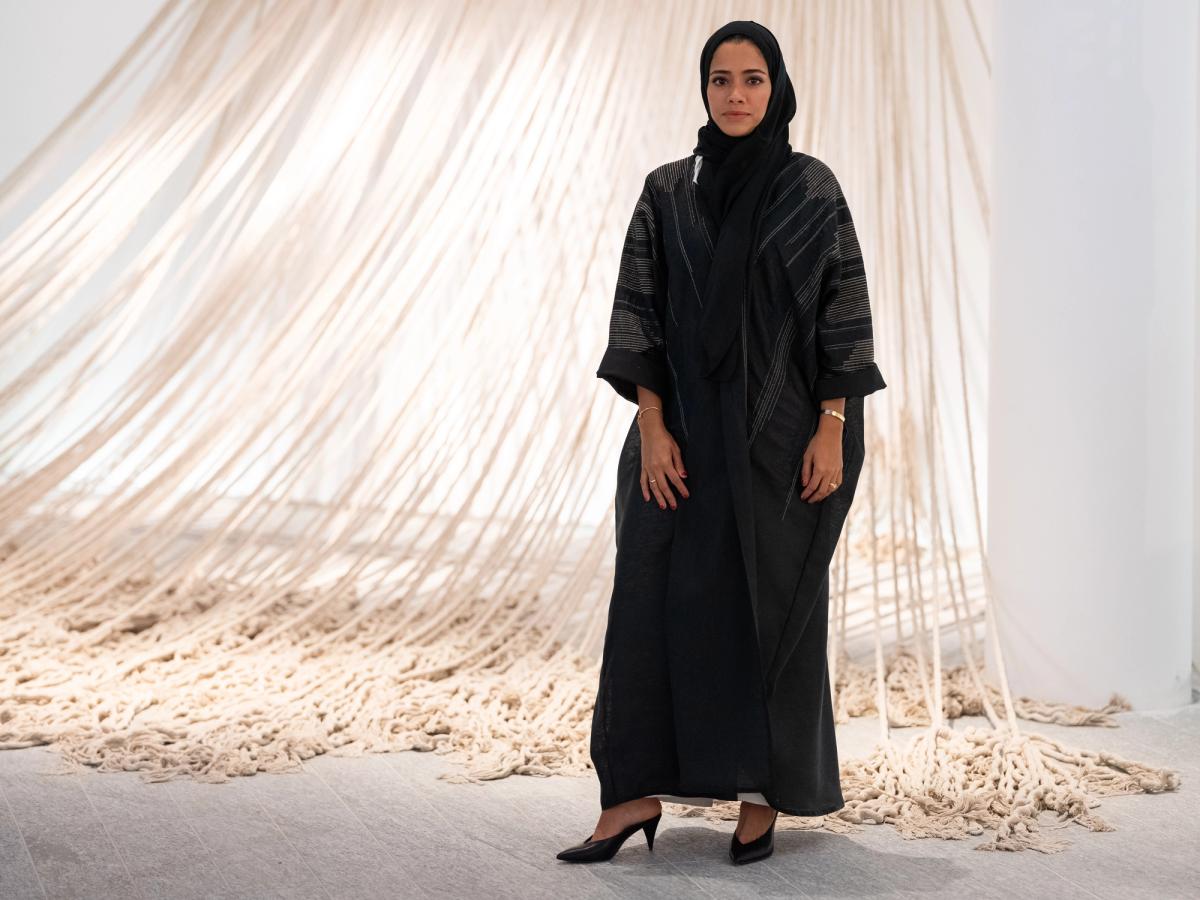Ten artists from across the Gulf have been nominated for the second Richard Mille Art Prize. The full list can be found here.
Work by the artists is on show at Louvre Abu Dhabi until 19 March and the winner will be announced 20 March.
Afra Al Dhaheri’s artwork at the Louvre Abu Dhabi, Weighing the Line, shows fringes of rope hanging from a wall, each one separating into a tangle of split ends by the time it reaches the floor. The similarity to human hair is intentional.
“Hair has a lot of meanings in different cultures,” she says. “I talk particularly from my perspective growing up in the UAE where we [consider] hair to be a private body part that we cover. I question these boundaries of privacy and that is what led me to this work, where I’m looking at cultural constructs and social conditioning. There are invisible boundaries we create and collectively acknowledge their existence.” The curtain of ropes suggests these boundaries and, in other presentations of the work, visitors can walk around and under it.
Al Dhaheri (born in 1988 in Abu Dhabi, UAE) started making art with hair during a residency at Porthmeor Studios in St Ives, Cornwall. She adopted the vivid colours of the Modernists from the St Ives School, painting in blocks separated by strands of her own hair. “They were colourful because of my surroundings. But what I absorbed from growing up in Abu Dhabi was this [more muted, monotone] palette: it’s natural, it makes sense. It led me to start looking for my materials at construction sites and hardware stores. That’s my environment.” The rope she uses is thick and strong and usually used in marine industries.
The work is also a way of taking in the rapid transformation of Abu Dhabi. “Change is traumatic, regardless of whether it is good or bad. We need time to process it,” she says. “I wanted to slow down time in my studio by producing these long process-like pieces. It’s a habitual activity, like my grandmother picking rice. Your mind is not really occupied with anything else. We spend three to four weeks untwisting the rope—but it remembers that it was twisted. It has the capacity to memorise form, just like hair is still wavy after it is unbraided.”



